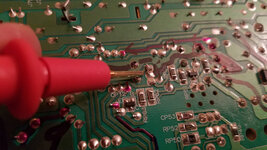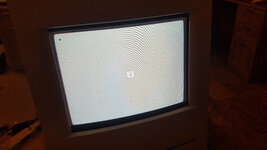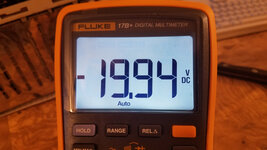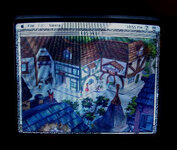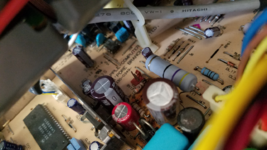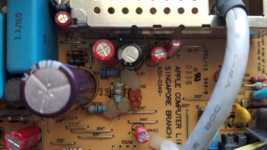When I got this machine, the logic board had been fully recapped and the analog board partially recapped. The display and soft power both worked, but the picture was pinched horizontally in the middle, like an hourglass. The DL21 and DL22 18V zeners were cooked and burned the PCB around them. I replaced them both with 1N4746 and changed the rest of the AB caps, except for the ones in the shielded cage. RL62 was cooked and open and I replaced it with a metal film 47Ω resistor.
Now when I turn on the rocker switch, the machine starts immediately (no soft start), chimes normally, but there is no picture. There is high frequency noise in short chirps, at about 3 per second, as if the AB is trying to start the display, but can't. The neck of the tube is not glowing.
I've confirmed cap polarity repeatedly and the newly installed parts don't appear to be under distress. No smoke, smells or noises.
I measured 47.5V at the center pin of the horizontal output transistor, but I'm not sure if this is the right place to get the B+ rail.
Out-of-circuit measurements:
RF11: 363Ω
RL62: 48Ω
RF8: 1.4Ω
RL22: 100Ω
RF19: 4.7Ω
DF2: Not shorted
Running measurements:
12V Rail: 11.6V
5V Rail: 4.9V
Center pin of horizontal output transistor: 47.5V
Some questions:
Is RL62 47Ω? My old part was too damaged to read so I replaced it based on the parts list below.
What type of diode is DF2?
What is the role of the DL21 and DL22 18V zeners? They are not populated on the LC575 AB.
Which components are involved in generating the B+ rail?
Where is the best place to measure B+?
Any help or documentation is greatly appreciated. I did find this parts list:
I've also attached it (html renamed to txt) since most CC resources seem to have disappeared.
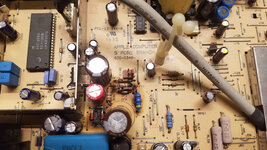
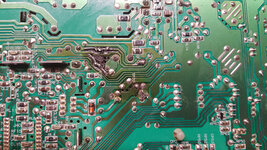
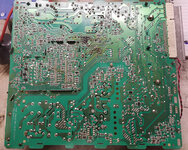
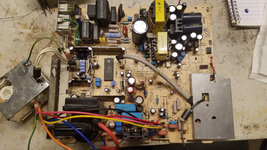
Thanks.
@JDW @Kay K.M.Mods
Now when I turn on the rocker switch, the machine starts immediately (no soft start), chimes normally, but there is no picture. There is high frequency noise in short chirps, at about 3 per second, as if the AB is trying to start the display, but can't. The neck of the tube is not glowing.
I've confirmed cap polarity repeatedly and the newly installed parts don't appear to be under distress. No smoke, smells or noises.
I measured 47.5V at the center pin of the horizontal output transistor, but I'm not sure if this is the right place to get the B+ rail.
Out-of-circuit measurements:
RF11: 363Ω
RL62: 48Ω
RF8: 1.4Ω
RL22: 100Ω
RF19: 4.7Ω
DF2: Not shorted
Running measurements:
12V Rail: 11.6V
5V Rail: 4.9V
Center pin of horizontal output transistor: 47.5V
Some questions:
Is RL62 47Ω? My old part was too damaged to read so I replaced it based on the parts list below.
What type of diode is DF2?
What is the role of the DL21 and DL22 18V zeners? They are not populated on the LC575 AB.
Which components are involved in generating the B+ rail?
Where is the best place to measure B+?
Any help or documentation is greatly appreciated. I did find this parts list:
I've also attached it (html renamed to txt) since most CC resources seem to have disappeared.




Thanks.
@JDW @Kay K.M.Mods

